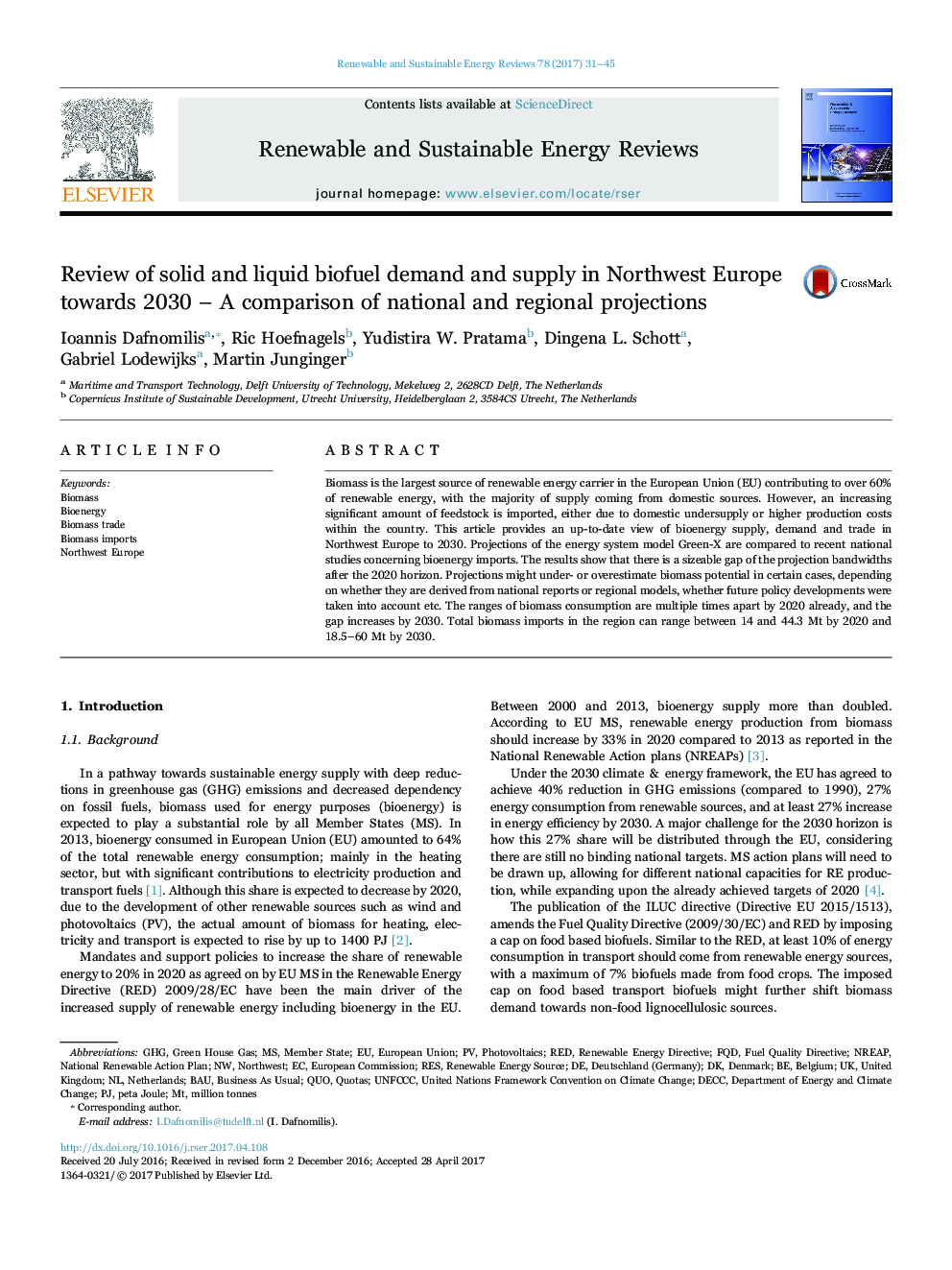| Article ID | Journal | Published Year | Pages | File Type |
|---|---|---|---|---|
| 5482450 | Renewable and Sustainable Energy Reviews | 2017 | 15 Pages |
Abstract
Biomass is the largest source of renewable energy carrier in the European Union (EU) contributing to over 60% of renewable energy, with the majority of supply coming from domestic sources. However, an increasing significant amount of feedstock is imported, either due to domestic undersupply or higher production costs within the country. This article provides an up-to-date view of bioenergy supply, demand and trade in Northwest Europe to 2030. Projections of the energy system model Green-X are compared to recent national studies concerning bioenergy imports. The results show that there is a sizeable gap of the projection bandwidths after the 2020 horizon. Projections might under- or overestimate biomass potential in certain cases, depending on whether they are derived from national reports or regional models, whether future policy developments were taken into account etc. The ranges of biomass consumption are multiple times apart by 2020 already, and the gap increases by 2030. Total biomass imports in the region can range between 14 and 44.3 Mt by 2020 and 18.5-60 Mt by 2030.
Keywords
Related Topics
Physical Sciences and Engineering
Energy
Renewable Energy, Sustainability and the Environment
Authors
Ioannis Dafnomilis, Ric Hoefnagels, Yudistira W. Pratama, Dingena L. Schott, Gabriel Lodewijks, Martin Junginger,
